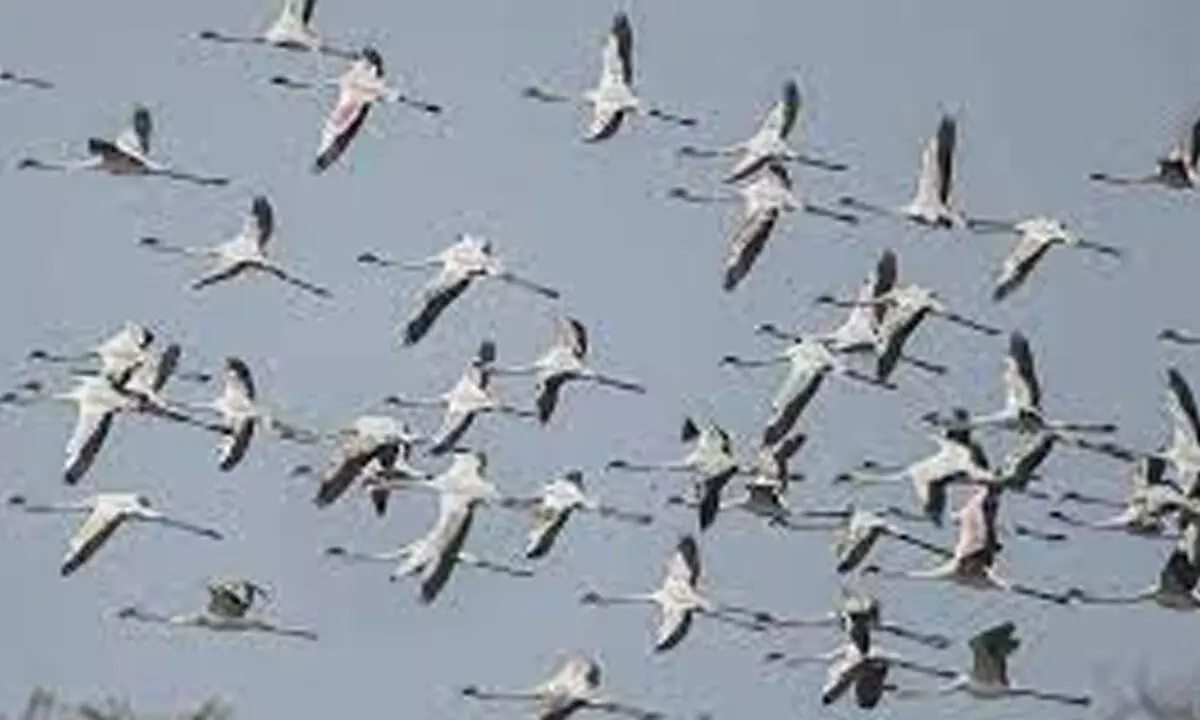Fewer migratory birds this year at Ramsar site Soor Sarovar in Agra
Share :

Soor Sarovar, also known as Keetham Lake, in Uttar Pradesh's Agra, has seen a fall in the number of birds migrating to the Ramsar site this winter.
Lucknow: Soor Sarovar, also known as Keetham Lake, in Uttar Pradesh's Agra, has seen a fall in the number of birds migrating to the Ramsar site this winter.
According to experts this could be due to a ‘warm and late winter’, and a shortfall in the monsoon.
A survey report of Asian Waterbird Census (AWC) at Soor Sarovar Bird Sanctuary in Agra has recorded fewer waterbirds this year as compared to past years.
“Water birds are the key indicators of a wetland’s health and prevalent ecological conditions. A wetland provides roosting, foraging habitat for wetland birds. Global climate change, lesser rainfall often leaves the wetland dried up, or lowering of water level in the water body. A delayed winter slows down or delays winter migration of long distant migratory water birds,” said an ornithologist working for Wetlands International South Asia.
During the Asian Waterbird Census for year 2024, there was a slight increase in the number of species of migratory birds reaching Ramsar site of Soor Sarovar this year, but it was not that significant because for most species, the number of birds coming was one or two only.
There were 59 species this year as compared to 55 species that landed in 2023 at Soor Sarovar natural habitat. These 59 species included 30 resident species and 29 species from other parts of the continent and Europe.
Last year, there were 27 resident species and 28 species from outside the country.
“However, there was a fall in the number of migratory birds reaching this Ramsar site. When compared to 2,659 waterbirds arriving in 2023, there were only 2,330 waterbirds this year,” the survey said.
Global climate change delayed winter and delayed migration and fewer number of winter waterbirds migrated from far Central Asia, North Asia including Russia and Siberia and the pattern is being witnessed almost everywhere in northern India this year.
The annual AWC for 2024 was successfully carried out in collaboration with National Chambal Sanctuary Project, Uttar Pradesh Wildlife Department and conservation support from Biodiversity Research & Development Society, Agra, in active participation of volunteers from Dr B R Ambedkar University, Agra; Wildlife SOS, Agra and sanctuary wildlife staff.
Experts pointed out that the water level at Soor Sarovar was also less, which lessened the number of birds which swim, but also number of birds walking on water surface remained steady this year.
Wetlands International’s annual waterbird census, ‘Asian Waterbird Census’ helps promote the designation and management of internationally important sites such as nationally protected areas, Ramsar Sites, IBA Sites, claimed the ecologist.
Soor Sarovar Wildlife Sanctuary is a unique wetland for waterbirds located on the bank of the Yamuna in Agra district. It is one of IBA Sites (Important Bird & Biodiversity Area) in India with a rich birdlife diversity.
Amongst the major species, which came in greater number this year were the Northern Shoveler, Bar headed Geese, Great Cormorant, while a fall was witnessed for Common Teal and Pelican.
The eight IUCN Red listed threatened species namely Oriental Darter, Black-headed Ibis, Black-necked Stork, Dalmatian Pelican, Greater Spotted Eagle, River Tern, River Lapwing and black-tailed Godwit turned up this year.



















